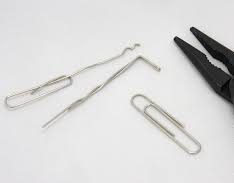

When it comes to new gear, we all feel the burn in our wallets to get our hands on the latest and greatest. And of course, if it’s improved over the previous version, it must be better, right?

Not always.
Though a newer version of something may come out, it’s not so much the gear itself that makes you better, it’s the skill you have using it that makes all the difference. If you have a strong grasp of the fundamentals, practice regularly and have reliable equipment, then you’ll be good in spite of the quality of gear. If, however, you have no training and rely exclusively on your equipment to get you through, you’ll be in a world of hurt as soon as something doesn’t go perfectly.

This is why Training Trumps Gear! When I attended the Urban Escape & Evasion course with Kevin Reeve from OnPoint Tactical, he hammered that saying into our heads several times an hour ad nauseum. But he had a point. If your marksmanship principles are weak, the shiniest new gun isn’t going to make you a better shot. If you don’t understand the principles of lock picking, you won’t be able to improvise a rake from a paperclip when your fancy one breaks.

The same applies to a survival situation in both urban and wilderness environments. Also in martial arts. Body mechanics and physics don’t change. The principles remain constant, only the application of those principles change to address the situation. Knowing the principles of a wrist lock is key as it can be adapted to countless applications, rather than a particular technique.

Though if you’re investing in gear, it’s always a wise investment to buy the highest quality that you can afford. It’s an investment in reliability. But all things being equal, invest in solid training. The more you know, the less you carry. And that’s because Training Trumps Gear! In almost every episode of MacGyver, Burn Notice or The A Team, the protagonists get through the tough times because they’re well trained and can improvise and adapt to changing conditions. Yes, I know they’re TV and not real, but they illustrate the point well.

Well-trained individuals are more “literate” in the field, able to draw on various experiences and tricks, if you will, and be more “conversant” in a difficult situation. Just as if you are in an unknown social situation, being better read or travelled gives you a wider spectrum of social currency than only knowing about one thing.
Understanding the principles and basics is the foundation of excellence in more advanced skills.
To that point, being trainable, humble, curious and committed to lifelong and learning are important predispositions to embrace towards building skills and knowledge that will enable you to not only use gear to it’s maximum potential, but also to improvise in adverse times because you’re fluent in the basic principles.

Invest in quality training, keep an open mind and always keep learning. If there is something you want to get better at or learn to do, invest in learning it. Anyone can buy the next newest shiny toy that promises to solve all your problems, but you can develop skills that will make your mind the equipment and the “tool” just that – an extension of you.
Stay focused, stay motivated and don’t give up. You can do it.
Stay Crafty,































